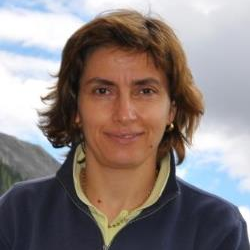Land Use Change Management: Recent Trends and Future Perspectives of Land
A special issue of Land (ISSN 2073-445X).
Deadline for manuscript submissions: closed (25 May 2023) | Viewed by 14404
Special Issue Editors
Interests: landscape ecology; agroecology; sustainability; human development evaluation and planning
Special Issue Information
Dear Colleagues,
Changes in land use are leading to a global polarization process. On the one hand, the urbanization trend does not stop: more than 55% of people are city dwellers and large cities are becoming the most evident manifestation of global change. On the other hand, the declaration of protected natural areas is increasing, with a general target of covering 20% of the land in each country. Between both extremes lies a vast space that often lacks clear development goals and adequate planning. Trends range from abandonment and depopulation to super-intensive agriculture. Within it there is a growing tendency for human uses to decouple from land conditions and dynamics, thus increasing exposure to risks caused by natural and anthropic events. This is also the space where competition between high-impact uses (e.g., energy, intensive agriculture) and (agro)biodiversity-based development (i.e., cultural landscapes, not urban life options) is being raised. Therefore, there is a need for planning and clear development goals. The objective of this special issue is to analyze the trends taking place in this in-between space of uncertain destiny, to identify win-win actions and policies already underway and offer a set of considerations to drive changes towards sustainability and human wellbeing goals.
Prof. Dr. Antonio Gómez-Sal
Dr. Asunción Saldaña-López
Guest Editors
Manuscript Submission Information
Manuscripts should be submitted online at www.mdpi.com by registering and logging in to this website. Once you are registered, click here to go to the submission form. Manuscripts can be submitted until the deadline. All submissions that pass pre-check are peer-reviewed. Accepted papers will be published continuously in the journal (as soon as accepted) and will be listed together on the special issue website. Research articles, review articles as well as short communications are invited. For planned papers, a title and short abstract (about 250 words) can be sent to the Editorial Office for assessment.
Submitted manuscripts should not have been published previously, nor be under consideration for publication elsewhere (except conference proceedings papers). All manuscripts are thoroughly refereed through a single-blind peer-review process. A guide for authors and other relevant information for submission of manuscripts is available on the Instructions for Authors page. Land is an international peer-reviewed open access monthly journal published by MDPI.
Please visit the Instructions for Authors page before submitting a manuscript. The Article Processing Charge (APC) for publication in this open access journal is 2600 CHF (Swiss Francs). Submitted papers should be well formatted and use good English. Authors may use MDPI's English editing service prior to publication or during author revisions.
Keywords
- Land polarization process
- Decoupling human use - ecological conditions
- New development goals for rural and peri-urban areas
- Land planning
- High impact land uses
- Biodiversity-based development
Benefits of Publishing in a Special Issue
- Ease of navigation: Grouping papers by topic helps scholars navigate broad scope journals more efficiently.
- Greater discoverability: Special Issues support the reach and impact of scientific research. Articles in Special Issues are more discoverable and cited more frequently.
- Expansion of research network: Special Issues facilitate connections among authors, fostering scientific collaborations.
- External promotion: Articles in Special Issues are often promoted through the journal's social media, increasing their visibility.
- Reprint: MDPI Books provides the opportunity to republish successful Special Issues in book format, both online and in print.
Further information on MDPI's Special Issue policies can be found here.






